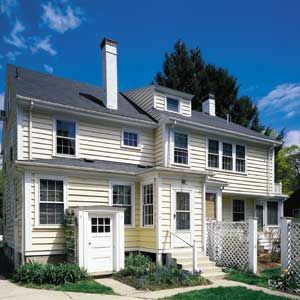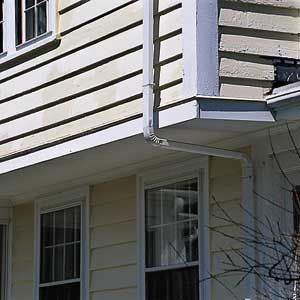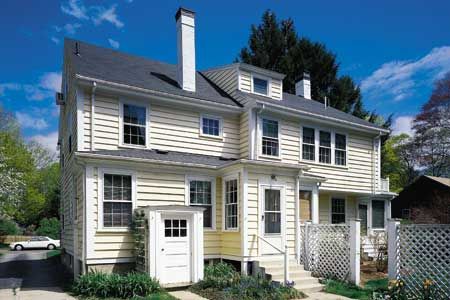
The front facade of Bruce Leasure and Kim Whittemore’s 1922 house in Winchester, Massachusetts, the 2002 This Old House TV project, was, at first glance, a study in Colonial Revival symmetry: The front door was centered and the windows line up, all under straight-corniced eaves. Walk around the back, however, and you’d see a hodgepodge of architectural elements. There was a variety of window sizes, an odd shed dormer, three doorways all at different elevations, and a weird overhang on half of the building. “The first thing Bruce and I thought was that the back of the house was a series of incongruous
additions,” said Kim. “We wanted to find out what was original to the house and what had been added on over the years.”
Part of the allure of an old house was knowing its history, and tracking a building’s changes over time can enhance the mystique. Beneath coats of paint, layers of drywall, and fields of wall-to-wall carpeting were clues to a house’s past. With a little detective work, some keen observation, and a trip to the local town offices, you can get an idea of how your house got to its present incarnation.
The Winchester house was full of architectural inconsistencies, which TOH general contractor Tom Silva thought meant the place had changed often. “Houses of this period were usually built as just a big box, with a plain gable roof and maybe a small ell off the back,” he explained. What immediately caught his eye was a change in the roofline — one-half of the back roof’s pitch got shallower over a peculiar 2-foot-wide cantilever — that didn’t fit the original style. Other oddities included a covered basement entrance to the left of the backdoor and an enclosed, windowed area — a kind of room to nowhere — on the right. “I was certain when we looked around we’d find an answer,” said Tom.
For a house built in the 20th century, the town records office can yield a lot of information. Kim followed her house’s paper trail to find out when things had changed, poring over tax, census, and deed listings. But the building department, which keeps copies of permits back to the 1920s, had only a few for renovations. “I was hoping to find one for adding that funny room on the back or changing the roof pitch,” she said, “but I turned up zilch.”

So Tom started looking at the house’s structure — both what was visible and what was exposed by demolition being done for the renovation. Examining the foundation, he checked for seams or changes in materials from poured concrete to, say, concrete block. But it was clear that the foundation was poured all at once. “Back then, they laid up forms with horizontal boards,” he explained. “You can follow the wood grain’s impression in the concrete right around the house.”
Moving up to the living spaces, Tom looked for changes on the moldings and millwork. “Sometimes something as subtle as a door hinge tells a lot,” he said. “You might see stamped steel hinges on one door and cast brass on the others.” But all the doors were consistent, including those inside the cantilever.
That feature particularly vexed Tom. His first thought was that it was added on for more space off the master bedroom, as a nursery or maybe a dressing room. His investigations, however, uncovered a surprise: Contrary to everyone’s hunches, the cantilever is original. The framing and the sheathing between the main house and the overhang were contiguous. Same thing for the rafters. “The carpenters built a simple truss to support the longer rafters over the cantilever, but it was all done by the same crew when the rest of the roof was framed,” he said. “I never would have guessed it.”
The “room to nowhere” wasn’t as simple to decipher. Its doorway had a wide, sloped threshold — which meant that it was once an exterior door — and the walls were sided. Yet the room was completely enclosed.
It wasn’t until the siding came down that Tom got some answers. A doorway to the living room had been patched over, as had a small square window into the kitchen. “The door gives purpose to the room,” said Tom. “It would have been used as a small sitting area off the living room — not an uncommon Colonial Revival feature — with a roof to block the afternoon sun. And the window would throw some light into the back hall. It makes perfect sense.”
Aside from this little room, it turned out that the Winchester house was largely unchanged from the way it was built, quirks and all. Still, Kim and Bruce were happy to have learned what they did. “Even though we didn’t find any earth-shattering changes, we learned a lot about the house’s history,” said Kim. “And if we didn’t know,” said Tom, “we always would have wondered.”

